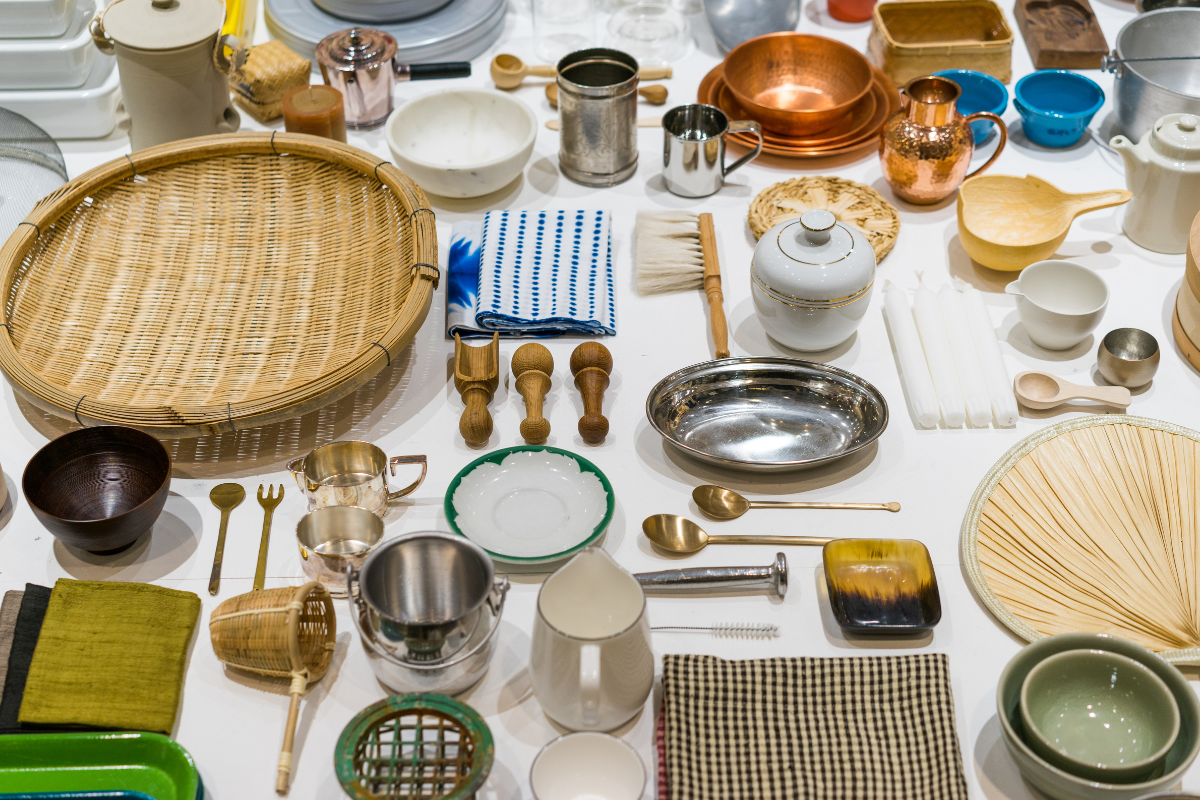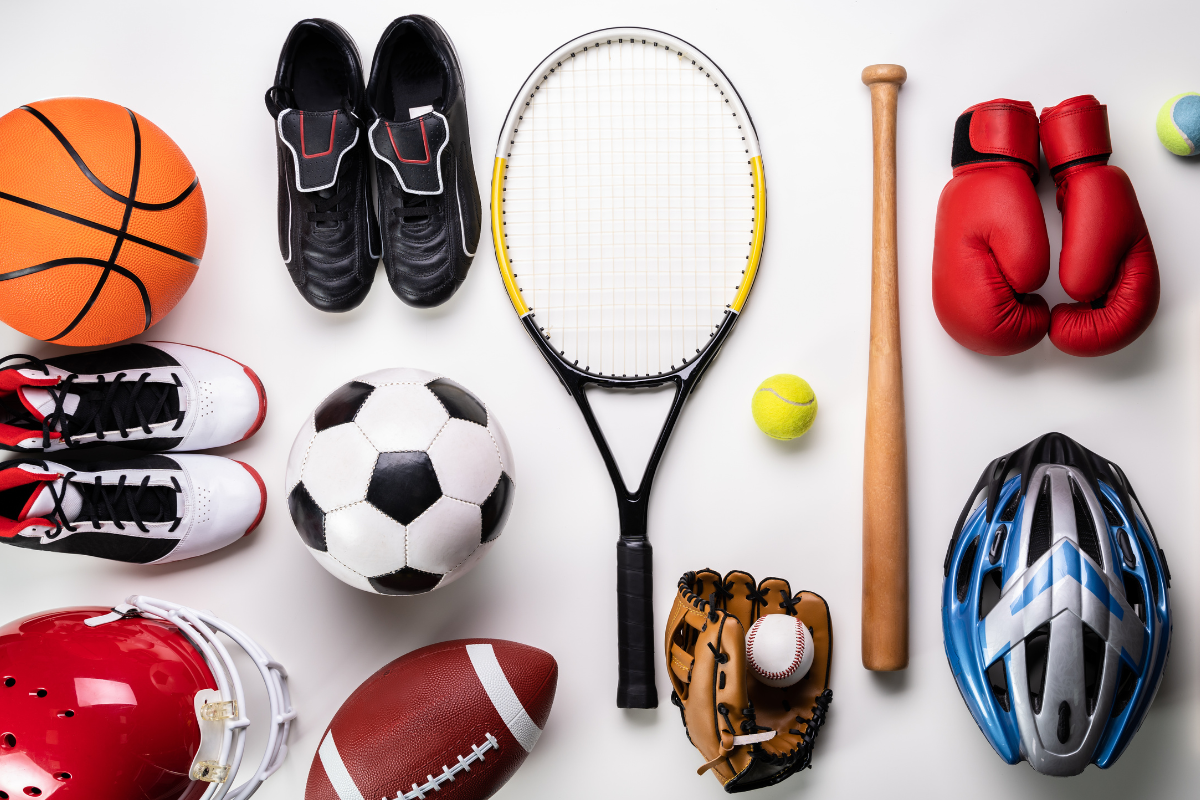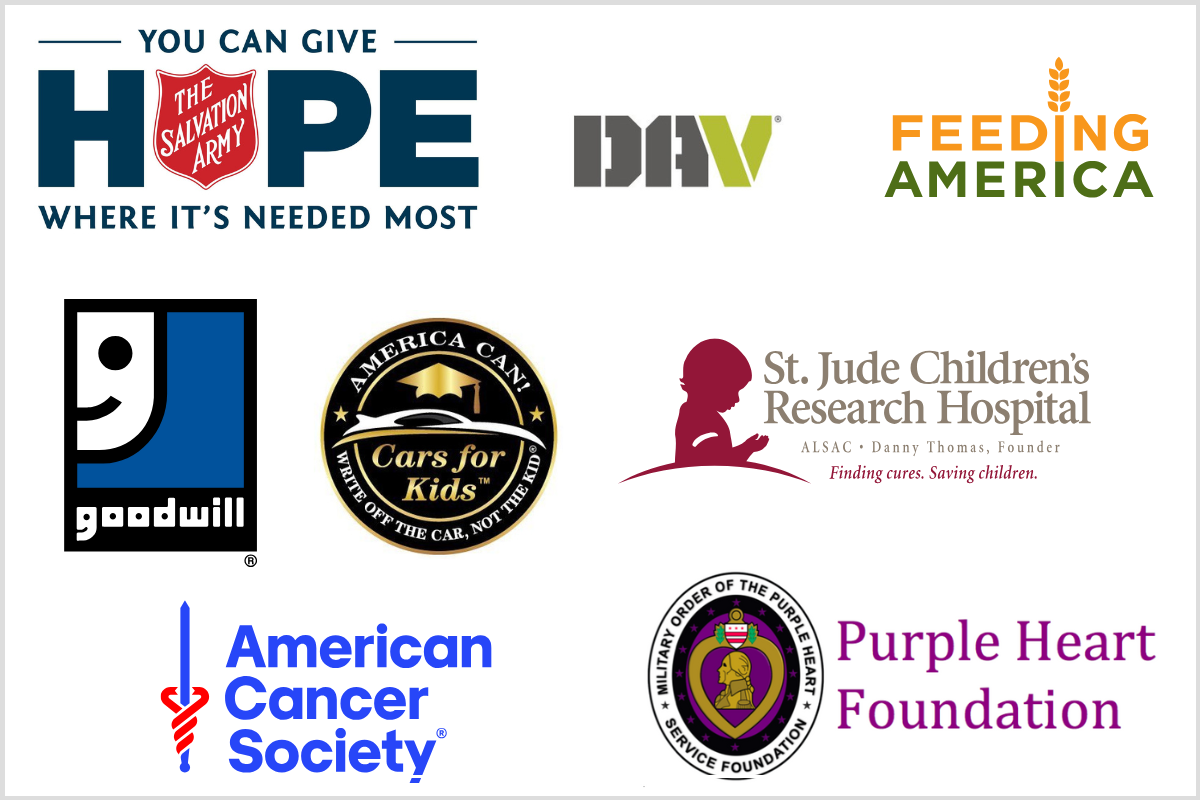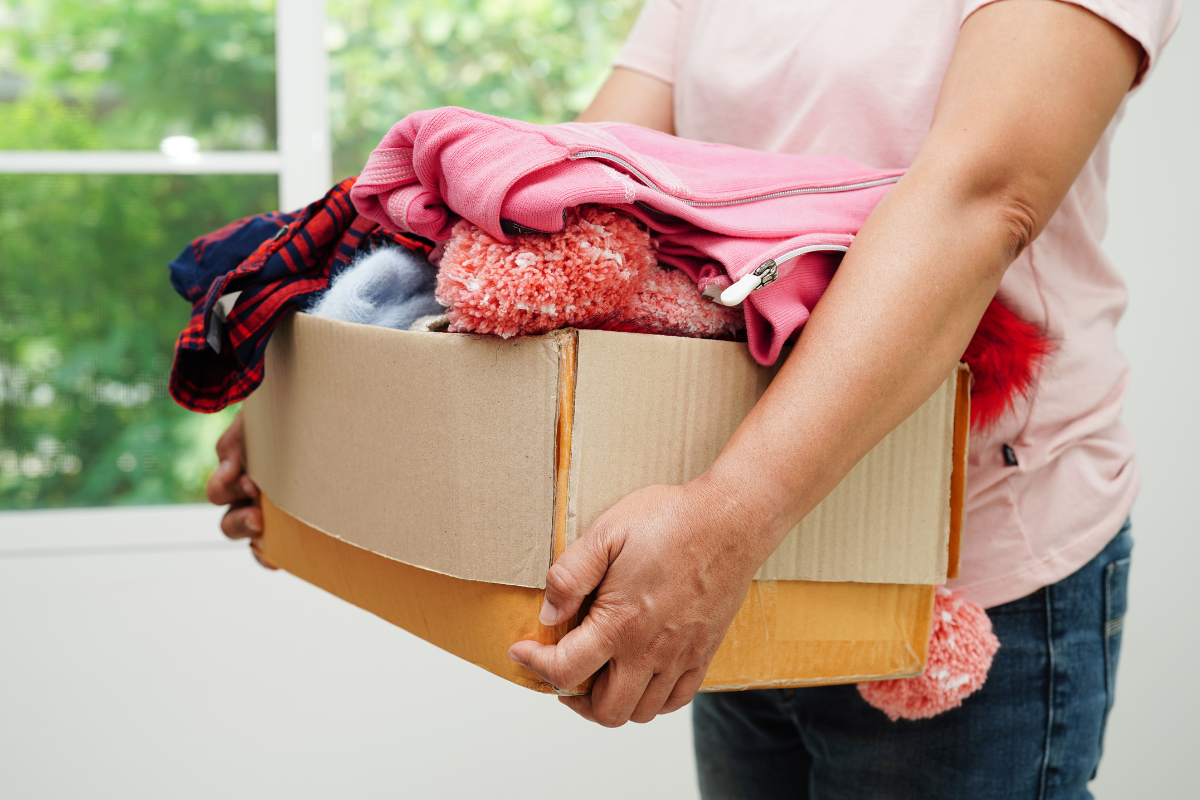Post Disclaimer: This blog reflects the author's personal experience with end-of-life matters and is provided in good faith for informational purposes only. While we aim to provide clear guidance on hard-to-find topics, this content is not legal advice and your use is at your own risk. Estate planning and end-of-life laws vary by location, so please consult your state's laws and seek guidance from a licensed attorney for your specific situation. We make no warranty about the accuracy or completeness of this information, which does not replace professional legal counsel. For more information, please see our full disclaimer.
When managing estate donations after losing a loved one, the emotional journey of sorting through their belongings can feel overwhelming.
Going through their possessions brings waves of sorrow and nostalgia, as well as questions about how best to handle each meaningful item.
Channeling donations to charitable organizations creates purpose from loss and builds a lasting legacy that honors your loved one's memory through positive community impact.
If you're facing decisions about estate donations, this path can provide emotional healing and meaningful support to others.
Discover how to make thoughtful choices as you process your loved one's belongings.

Medical Equipment: Supporting Health Access
When a loved one passes, donating their medical equipment can support those in need.
These items often transform lives by improving mobility, independence, and quality of care for individuals facing health challenges.
Whether it's a wheelchair or a CPAP machine, your donation can provide hope for families struggling to access these essential tools.
High-Demand Mobility Aids that Transform Lives
Mobility aids are among the most in-demand donations.
They provide freedom and autonomy to individuals who might otherwise feel confined by their medical conditions.
Some of the most sought-after items include:
- Wheelchairs: Whether manual or motorized, wheelchairs allow people to regain mobility and participate in daily activities.
- Walkers and Rollators: These help seniors and those recovering from surgeries maintain stability and balance.
- Mobility Scooters: Ideal for individuals who need assistance navigating longer distances.
- Hospital Beds and Lift Chairs: Essential for at-home recovery and long-term care.
If these items are in good working condition, donating them can directly impact someone's life, making everyday tasks achievable again.
Organizations That Accept Medical Equipment
Many nonprofits and community organizations specialize in refurbishing and redistributing medical gear.
They ensure donated items reach those who need them most.
Here are some key organizations to consider when making estate donations:
- Local charitable clinics and health centers often recycle medical equipment for low-income families.
- Nonprofits like MedShare distribute usable surplus medical items worldwide to support underserved populations.
- Veterans organizations can use donated mobility aids to assist injured service members and veterans.
Before donating, contact these organizations to confirm donation guidelines and ensure your items are accepted.
Impact Stories: How Medical Equipment Estate Donations Change Lives
Donations often carry an emotional impact that extends far beyond the item itself.
Here's a glimpse into the difference they make:
- A father recovering from spinal surgery received a donated hospital bed. This allowed him to heal at home comfortably while spending precious time with his children.
- An elderly woman battling arthritis regained independence after receiving a newly donated mobility scooter.
- CPAP machines, passed on through thoughtful donations, have improved sleep and health for individuals with sleep apnea who couldn't afford the equipment.
Acts of generosity allow families to breathe easier, both figuratively and literally.
Practical donations provide tangible relief to those facing daily hardships.
Donating your loved one's medical equipment is a profound way to honor their legacy while uplifting others.

Professional and Practical Items: Helping Others Move Forward
Donating professional and practical items from a loved one's belongings can lead to powerful transformations.
These contributions often provide a stepping stone for individuals striving to rebuild their lives.
From clothing that inspires confidence in job interviews to tools that support skill development, your decision to give can create new opportunities for others.
Role of Professional Clothing in Job-Seeking
First impressions matter, especially during a job interview.
Professional attire can instill confidence in job seekers and enhance their chances of success.
Imagine someone walking into an interview wearing a carefully chosen suit or dress donated by you.
That one gesture could mean the difference between landing the job or facing another day of uncertainty.
For many, access to professional clothing remains a challenge.
Whether a tailored jacket or a simple blouse, having the right outfit helps job seekers feel prepared and capable.
These items give them the confidence to pursue career opportunities with optimism and poise.
Organizations Specializing in Workforce Reentry
Numerous nonprofits are committed to helping individuals prepare for and reenter the workforce.
They match donations like professional clothing, shoes, and accessories with job seekers who need them.
Involvement with these organizations ensures your contributions directly impact someone's journey toward employment.
Examples include:
- Dress for Success: Their global programs empower women by providing attire, career coaching, and networking opportunities.
- Career Gear: Focused on men, this organization offers clothing and mentorship to help them secure stable employment.
- Local community centers and thrift stores: Many provide workforce preparation resources and distribute donated items to job seekers in need.
When donating, check with these organizations to understand their mission and requirements.
This ensures your donations will be used where they are most needed.
Success Stories from Job Placement Programs
Generosity like yours has already sparked countless stories of change.
Thanks to donations, people who once struggled to reenter the workforce thrived.
Here are a few examples of how donated items turn aspirations into reality:
- A single mother found a stable job after receiving tailored support and attire from local programs. With her first paycheck, she enrolled in a course to advance her career.
- A veteran transitioning to civilian life gained confidence for his first interview because the suit he wore was donated by someone who understood the value of second chances.
- An individual overcoming homelessness stepped into a customer service role with the help of donated shoes and coaching provided by a workforce organization.
These stories highlight the ripple effect of contributing practical items.
What seems like a small gesture can create a lasting impact, helping individuals move toward stability and self-reliance.
While these transformations may seem distant, they are closer to home than many realize.

Creating Homes: Essential Household Donations
Helping others create a sanctuary is one of the most heartfelt ways to give back.
Household donations don't just provide physical items; they give people a foundation for starting over.
Whether it's a family fleeing violence or someone rebuilding after life on the streets, these contributions are more than objects—they represent hope, stability, and the chance for brighter days.
Critical Needs in Domestic Violence Shelters
Domestic violence shelters often assist survivors starting from scratch, which means their need for essential household goods is constant.
Items that may seem minor to you can make a big difference for a family in crisis.
Some of the most needed items include:
- Bedding and towels to offer comfort during tumultuous times
- Kitchen essentials, such as pots, pans, and utensils for preparing meals
- Cleaning supplies, like detergents, sponges, and trash bags, to create a hygienic living space
Shelters aim to restore a sense of normalcy for families uprooted by violence.
These essentials are the building blocks of a fresh start.
Supporting Families Transitioning from Homelessness
When families transition out of homelessness, they often move into empty apartments.
Supplying them with basic household necessities transforms these spaces into homes.
It's about more than meeting material needs—these items symbolize a new chapter in their lives.
Imagine starting fresh in a barren apartment.
A donated dining table allows meals together.
A cozy quilt brings warmth on a cold night.
Even small donations, like a set of plates or a lamp, provide dignity and comfort.
Most-Needed Household Items
Whether you're donating to shelters, transitional housing programs, or individuals in need, some items are always in high demand:
- Furniture: Tables, chairs, sofas, and beds are the backbone of any home.
- Kitchen Supplies: Dishes, cutlery, and cooking tools are essential daily.
- Bedding and Linens: Sheets, blankets, and pillows bring comfort and warmth.
- Lighting Solutions: Floor lamps and table lamps are often overlooked but essential.
- Appliances: Small appliances like microwaves, coffee makers, and toasters make a big difference.
These donations don't just meet immediate physical needs—they provide emotional security.
For those rebuilding their lives, a furnished home signifies stability and hope for the future.
No matter how simple, your contributions foster empowerment and resilience in those receiving them.

Educational Resources: Investing in Future Generations
Donating educational resources can spark inspiration and open doors of opportunity for young minds.
Charitable contributions in this area play a critical role in building strong communities.
For children and young adults, access to proper materials means learning, creativity, and a bright future.
Supporting Youth Development
Youth programs thrive through donations, providing essential tools and opportunities for future generations.
When you contribute to these programs, you give more than just items— you're fostering growth and potential.
How do donations help these initiatives?
By supporting:
- Enrichment Activities: Sports equipment, art materials, and STEM kits allow children to explore their talents and interests.
- Community Tutoring: Supplies like markers, paper, and whiteboards equip volunteer teachers with the tools to teach effectively.
- After-School Support: Many underserved schools and centers rely on donated resources to run their programs.
Your contributions directly benefit youth programs by ensuring students can access education and extracurricular activities they might otherwise miss out on.
Types of Educational Materials Most in Demand
There's a range of educational materials that are constantly needed.
- Books: Fiction, non-fiction, and textbooks are high-priority as they grow libraries and reading programs.
- Stationery: Pencils, notebooks, markers, and erasers—these small items make a big difference in classrooms.
- Technology: Laptops, tablets, and chargers, even older or refurbished, help bridge the digital divide.
- Classroom Furniture: Desks, chairs, and organizational tools create better learning environments.
- Sports Equipment: From soccer balls to jump ropes, these items encourage physical activity and team building.
Your simple donation can fuel someone's pursuit of knowledge and success.
If you're navigating the emotional task of deciding what to give, consider the incredible impact even modest contributions can have.

Personal Care Items: Meeting Basic Needs
Providing personal care items through donations is a straightforward yet heartfelt way to support those in need.
Many individuals served by shelters or community organizations lack access to the simplest necessities.
Offering these items brings relief, dignity, and hope during difficult times.
Types of Items Most Needed by Shelters
Shelters across the country are always in need of personal care products.
These are not luxuries—they're everyday essentials that help people maintain hygiene and self-respect.
Commonly requested items include:
- Toothbrushes and toothpaste: Basic oral hygiene products are essential but often overlooked.
- Deodorants and soaps: These simple yet critical items help individuals feel fresh and clean.
- Disposable razors and shaving cream: Small items that significantly impact personal grooming.
- Feminine hygiene products: Tampons and pads are among women's shelters' most frequently needed items.
- Shampoos and conditioners: Travel-sized bottles are beneficial for distribution.
- Baby wipes and diapers: Vital for mothers with infants in transitional housing.
If you have unopened and unused personal care products, consider donating to shelters near you.
Impact on Community Health Services
The ripple effect of these donations extends beyond individual recipients.
By fulfilling basic hygiene needs, you alleviate pressure on community health services.
Why? When people are equipped with personal care essentials, they're less likely to suffer from preventable conditions caused by poor hygiene.
Imagine a shelter family struggling to access basics like soap or toothpaste.
These minor omissions can lead to significant health issues that strain local clinics and hospitals.
Contributing personal care products reduces this burden while supporting preventive care in your community.
Moreover, donated items allow social service organizations to allocate their limited budgets more effectively.
Instead of spending resources on essential supplies, they can focus on initiatives like job placement, housing services, and mental health support.
If you're managing your loved one's estate or thinking of ways to make meaningful donations, start with items you already have at home.
Small actions create big waves in the lives of those who need them most.
Consider reviewing your resources with guidance like this executor's responsibilities checklist.

How to Make Impactful Donations
Giving away your loved one's belongings can feel like parting with memories, but it's also an incredible way to create a lasting impact.
Charitable donations ensure your loved one's items find new purpose, benefiting those in need.
This section breaks down the steps for making meaningful contributions, ensuring your generosity counts where it's needed most.
Researching Local Organizations
Choosing the right charity is a crucial first step.
Not all organizations accept every type of donation, so it can be easier to identify one that aligns with your goals.
Start by considering:
- Mission Alignment: Does the nonprofit's cause resonate with your loved one's values?
- Reputation: Look for reviews or charity accreditation to ensure reliability.
- Location Accessibility: Local charities often make it easier to deliver items.
A great way to begin is by browsing an organization's website or contacting directly.
For example, community thrift stores, domestic abuse shelters, and job reentry programs often welcome usable household goods and personal items.
Consider visiting Sorting Through a Loved One's Belongings: A Guide.
This guide provides practical insights on honoring your loved ones through thoughtful donations.
Understanding Donation Guidelines
Charitable organizations typically have criteria to help sort suitable donations.
Following these ensure your contributions reach those who need them most.
Common guidelines include:
- Donating clean, undamaged items.
- Double-check the types of items accepted (e.g., some places won't take mattresses or outdated electronics).
- Packaging fragile items securely for transport.
Every organization operates differently.
Always call ahead or check their website to avoid missteps—especially for unique items like medical equipment.
Learn additional tips at Estate Cleanout: Choosing Between Donating and Selling Items.
Preparing Items for Donation
Taking the time to prep items makes them more useful and speeds up charity processing.
Here'swon't how:
- Inspect Condition: Ensure items are clean and in working order. Broken or expired goods can burden charities.
- Sort for Purpose: Bundle similar items together (e.g., clothes in one bag, kitchenware in another).
- Label and Itemize: Keep track of what you're donating, especially for tax deduction purposes.
Think of it like gifting someone a present—you want it to be as appealing and ready to use as possible.
Tax Deduction Considerations
Donations can not only bring emotional closure but also financial relief.
Being mindful of tax deduction rules turns heartfelt giving into a practical win.
Here'syou'reHere'reready to use what to know:
- Qualified Organizations: Only IRS-approved charities allow deductions.
- Fair Market Value: Estimate the item's value based on its condition and age.
- Detailed Receipts: Request acknowledgment from the charity for donations over $250.
If this sounds overwhelming, consult a tax advisor or explore resources for estate handling.
Such small efforts can maximize the impact of your good deeds.
By focusing on these steps, the process becomes more organized and rewarding, both emotionally and practically.

Wrap-up: Making Estate Donations
Donating a deceased loved one's belongings is an act of compassion that creates meaningful ripples.
Each item given holds the potential to positively shape someone else's circumstances, transforming grief into generosity.
This process offers more than material support—it carries your loved one's values and legacy.
You contribute to a better world and find emotional closure by taking thoughtful steps, even amid loss.
The legacy of your loved one can live on through others.
Take that first step to share and honor their life in a lasting way.
Additional Resources: Charities List
United States:
- Goodwill: goodwill.org
- Salvation Army: salvationarmyusa.org
- Habitat for Humanity ReStore: habitat.org/restores
- Dress for Success: dressforsuccess.org
- MedShare (medical equipment): medshare.org
- DonationTown: donationtown.org
Canada:
- Diabetes Canada: diabetes.ca/donations
- Value Village/Savers: valuevillage.com
- Goodwill (Canada): goodwillindustries.ca
- Salvation Army (Canada): salvationarmy.ca
United Kingdom:
- British Heart Foundation: bhf.org.uk/shop/donating-goods
- Sue Ryder: sueryder.org/donate/donate-goods
- Emmaus: emmaus.org.uk/what-we-do/shops
- Age UK: ageuk.org.uk/shops/donate-to-our-shops
Australia:
- St Vincent de Paul Society: vinnies.org.au
- Salvation Army Australia: salvationarmy.org.au/donate
- Red Cross Australia: redcross.org.au/donate/donate-goods
New Zealand:
- Salvation Army NZ: salvationarmy.org.nz
- Red Cross NZ: redcross.org.nz
- St Vincent de Paul NZ: svdp.org.nz
India:
- Goonj: goonj.org
- GiftAbled Foundation: giftabled.org
- Clothes Box Foundation: clothesboxfoundation.org
Note: Verify current donation policies and item restrictions with local branches.
Check out the Up & Doing glossary page for an alphabetical listing of key terms related to estate administration, funeral planning, and other end-of-life topics.




